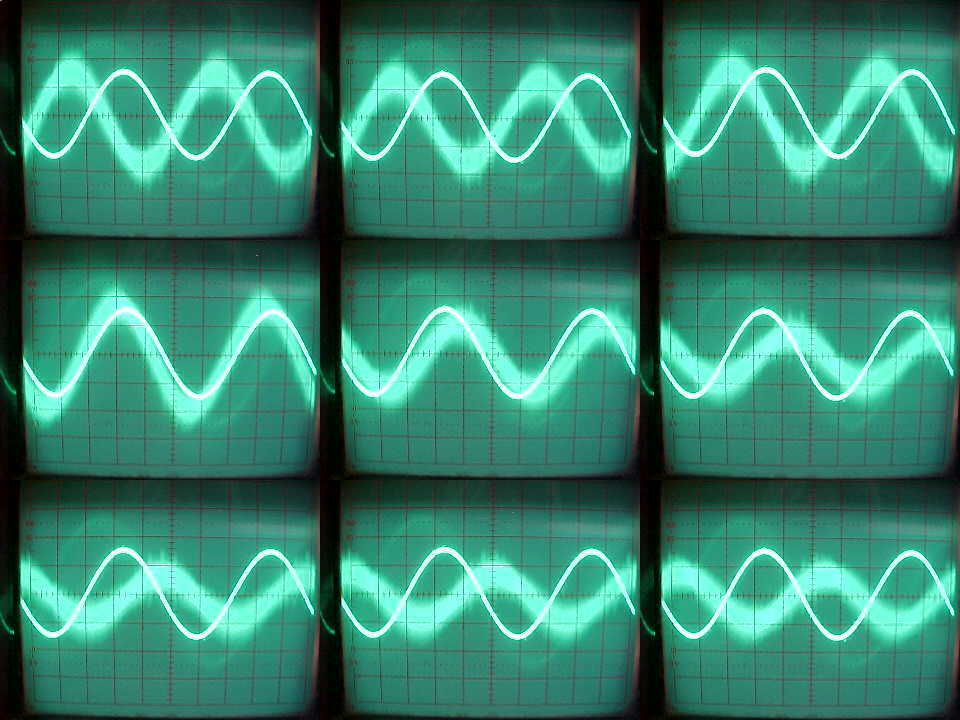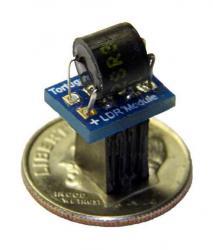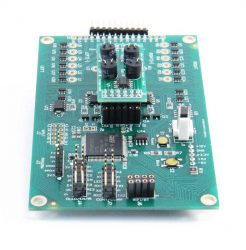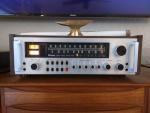Humming Along To The Pin 1 Problem
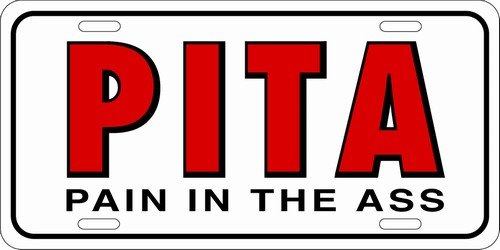
The original title to this article was going to be “The balanced audio “pin 1 problem” visits Tortuga Audio and how we hummed along with it – and then stopped.” Too much? I thought so too.
There’s a particular recurring problem in audio design that’s such a perennial PITA that it even has its own website: pin1problem.com
That, I would argue, is some accomplishment.
You would think that a few decades of accumulated audio design/engineering know-how would have definitively solved any one specific problem. Think again. What problem? The “Pin 1 Problem” or what I’ll refer to as the “pip” since repeating “pip” over and over is far less annoying than “pin 1 problem”.
What the hell is pip you ask? If you want a comprehensive deep dive answer to “what is pip” then I recommend you explore the links listed on the pin1problem.com website. But since I’m trying to tell you my story, here’s my definition:
PIP (a.k.a. the “pin 1 problem”) is when balanced audio connections cause audible hum that’s someone else’s fault but is yours to solve.
Since my story isn’t going to make much sense without at least some understanding of balanced audio, here, with apologies, is a brief tutorial.

Balanced audio is a way of sending audio through cable that makes it practically immune from sources of noise along the way. To do this requires 2 wires with each carrying the same audio signal except these signals are 180 degrees out of phase with the other. These wires are connected to pins 2 and 3 on 3-pin XLR type audio connectors. Unlike with RCA connections that have just one audio signal plus a ground reference, balanced audio does not require a ground reference. So far so good.
Patience, we’re getting to the PITA part.

In addition to the pair of out-of-phase audio signals there’s also a 3rd wire. The sole purpose of the 3rd wire is to act as a noise shield for the two audio signal wires. Thus the 3rd wire isn’t actually a wire per se it’s usually a copper braid or foil surrounding the two audio signal wires. It’s this “shield” wire that gets connected to that PITA pin 1.
Let’s be clear about this. The shield wire DOES NOT carry any audio signal. The shield wire IS NOT a ground reference for the two out-of-phase audio signals. It’s just a noise shield.
Still all fine and good. But what shall we do with pin 1 that’s connected to the shield that doesn’t carry an audio signal that isn’t a ground reference. We connect it to ground! What??? Yes, well if you don’t connect the shield do ground you don’t get the full benefit of its noise protection. So you ground it.
And in the grounding of pin 1 you have the genesis of this particular PITA. How so? For the simple reason that after 50+ years balanced audio some audio designers continue get it wrong. Behold, the balanced audio PITA rendered into a simple graphic borrowed from John Broskie over at tubecad.com (a great site to get lost in audio technophoria).

Allow me to interpret. Connecting pin 1 to circuit ground – BAD! Connecting pin 1 to chassis ground – GOOD!
What’s so bad about BAD? Audible hum! Loud obnoxious ugly 50/60 hertz power supply ruin your music listening experience I hate this equipment hum. What is hum? It’s the sonic manifestation of ground loop currents. Want some hum? I’ve got your hum right here.
The right way to terminate pin 1 is to connect it to chassis ground. Chassis ground is another way of saying “earth ground”. You know that 3rd pin on your AC plug? That pin should be….literally…connected to the Earth via the rod that someone pounded into the ground next to the power meter when they built your home. That is what chassis ground connects to.

Sounds simple enough, right? But here’s the rub. Even though pin 1 should not be connected to signal ground (BAD), signal ground is itself ultimately connected to chassis/earth ground. What? Head hurting yet? Feeling the PITA?
It might seem like a difference without a distinction but connecting pin 1 correctly avoids hum while connecting it the wrong way can buy you buckets of hum.
Having a working appreciation for the pin 1 problem, we at Tortuga Audio decided to stay above the fray on this whole subject when we designed our balanced passive preamps. We did what many do when faced with a complex potential PITA. We punted! As in we punted the issue back to the designers of sources and amplifiers. In short, we chose to not connect pin 1 at all; a legitimate design decision, especially for a passive preamp. Why terminate pin 1 at every end when terminating only one end at the source and amp should be sufficient. Here’s how that went.
Most of our customers have had no hum problems with our “no pin 1 connection” design decision. But a few did. Think about this for just a moment. You connect a balanced preamp to a source (DAC) and an amplifier, there’s no pin 1 connection to either device within the preamp itself and yet you get hum. In most cases even when you disconnect the source from the preamp with only the amp connected it still hums!
Remember my definition of pip? …”audible hum that is not your fault but is yours to solve”? Do you get the joke now? Any amp with balanced inputs that hums when connected to a preamp with no pin 1 connection is an amp with a design problem. Remember, pin 1 is ONLY supposed to connect the cable shield to ground and should in no way be part of the audio signal pathway and should not be able to cause hum. What to do?
The first change we made was to connect all the pin 1’s together on each channel such that our preamp became a “pin 1 pass-through” device. This cleared up the hum problem for most, but not all, of those few customers who experience hum.
One of the challenges to solving this problem is we couldn’t recreate this hum problem with the equipment we had in our shop. We solved this by picking one customer and acquiring the same balanced amplifier so we could get to the bottom of this hum issue once and for all. Thus we ended up with a pair of Job 250 watt mono amps and had at it.
Before I get to the conclusion of this saga, here’s an interesting quote about the Job 250 from a 6moons.com review of this amp:
The heart of the matter. Hifi 101 is firm. Twice the power only nets us a 3dB gain in loudness (to double SPL requires 10 x the power). If that’s all the 250 monos accomplished over the 225 stereo, most reasonable folks would say meh. To stop such sheepishness, we return to our beginning and the elimination of crosstalk. That’s what allocating discrete power supplies per channel does. To overdraw and simplify for emphasis, now some bombast in the left channel can’t sully some micro detail in the right and vice versa. We’d expect more precise soundstaging and more poise under duress. Of course the monos also get bigger transformers. Bigger reserves would promise improved dynamics. And perhaps certain circuit tuning has refined other parameters over the stereo amp. As always, subjective listening impressions can’t conclusively point at specific tech specs as the cause for differences. Only the engineers who isolate parts and circuit junctures know for sure what’s doing what, precisely. On that count, we do know why the 250 can hum when connected XLR. With its single-ended input stage, its XLR is a mere convenience feature. It’s not a true balanced input. What’s more, it includes a protective resistor. When fed from a true balanced circuit like my new COS Engineering D1 DAC/pre, this resistor can cause hum whilst RCA is dead quiet. Faux balanced connections—i.e. convenience XLR to convenience XLR—might be perfectly quiet however. It all depends on how an XLR output is implemented. Since in this instance RCA is the purer input, that’s what I used exclusively.
As soon as we connected the Job 250’s to the LDRxB Balanced Passive Preamp and turned on the Jobs, they hummed like mad. Even with no source connected to the preamp.
Next we connected the pin 1’s of each channel to chassis ground and boom….no hum. Zero. Zip. Nada. Humdonegone. Evidently, that Job amp, and a few other balanced amps out there, actually require pin 1 to be grounded properly or else they hum. Keep in mind we hadn’t terminated pin 1 improperly. We hadn’t terminated it at all!
Next we removed the pin 1 ground jumper and connected a DAC to the preamp and although the hum was much reduced (the pin 1’s are all pass-through) it was still quite noticeable. Adding the jumper back in killed the hum completely.
In conclusion, the PITA pin 1 problem that caused the hum was not our fault insofar as the amp shouldn’t have hummed at all just by virtue of connecting it to a preamp. But that’s why pin 1 has its own website. And while not our fault it was ours to solve. Fortunately, we have.
Going forward we’ll be connecting pin 1 to chassis ground on all of our balanced preamps. As it turns out that is the current recommended design practice for all balance connections. A-hum.
